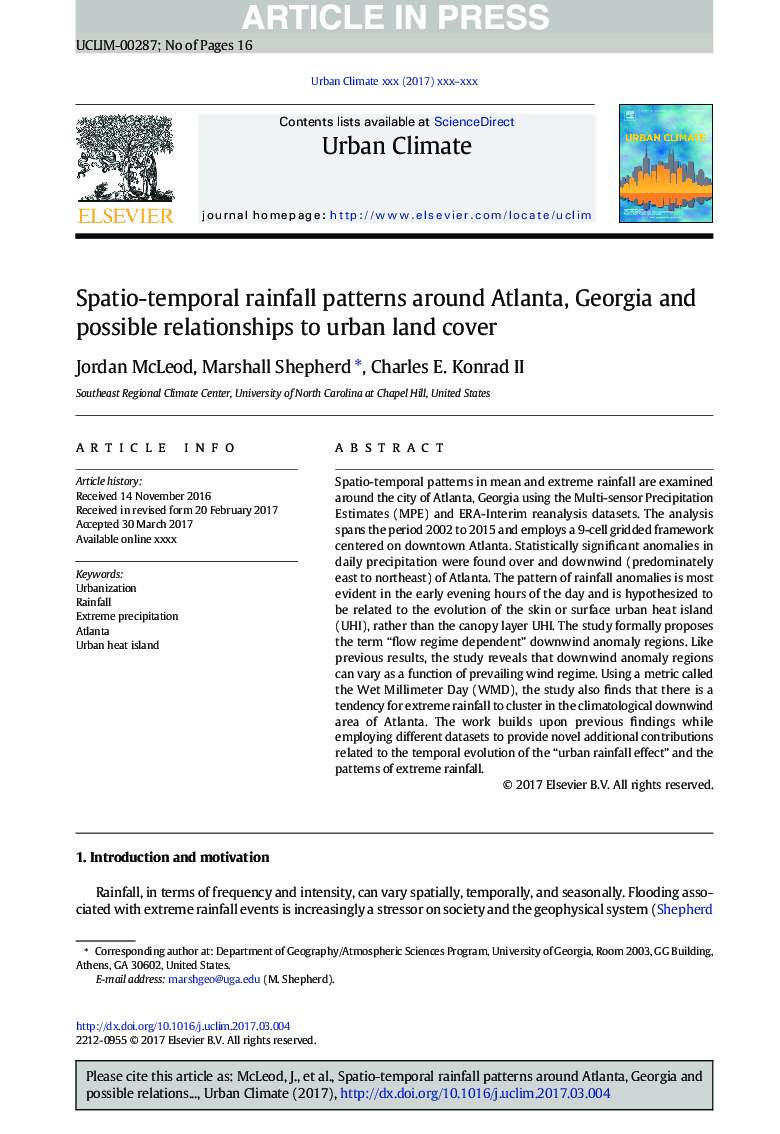| Article ID | Journal | Published Year | Pages | File Type |
|---|---|---|---|---|
| 4762351 | Urban Climate | 2017 | 16 Pages |
Abstract
Spatio-temporal patterns in mean and extreme rainfall are examined around the city of Atlanta, Georgia using the Multi-sensor Precipitation Estimates (MPE) and ERA-Interim reanalysis datasets. The analysis spans the period 2002 to 2015 and employs a 9-cell gridded framework centered on downtown Atlanta. Statistically significant anomalies in daily precipitation were found over and downwind (predominately east to northeast) of Atlanta. The pattern of rainfall anomalies is most evident in the early evening hours of the day and is hypothesized to be related to the evolution of the skin or surface urban heat island (UHI), rather than the canopy layer UHI. The study formally proposes the term “flow regime dependent” downwind anomaly regions. Like previous results, the study reveals that downwind anomaly regions can vary as a function of prevailing wind regime. Using a metric called the Wet Millimeter Day (WMD), the study also finds that there is a tendency for extreme rainfall to cluster in the climatological downwind area of Atlanta. The work builds upon previous findings while employing different datasets to provide novel additional contributions related to the temporal evolution of the “urban rainfall effect” and the patterns of extreme rainfall.
Related Topics
Physical Sciences and Engineering
Earth and Planetary Sciences
Earth and Planetary Sciences (General)
Authors
Jordan McLeod, Marshall Shepherd, Charles E. II,
